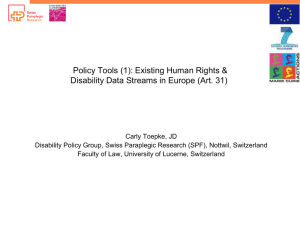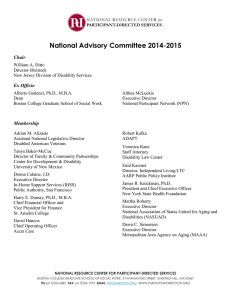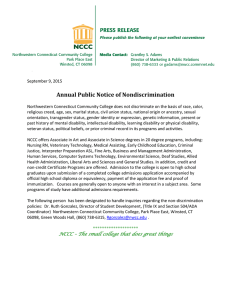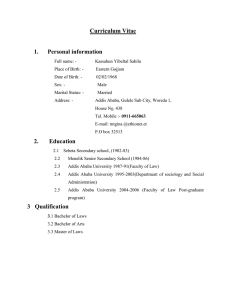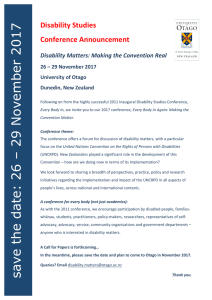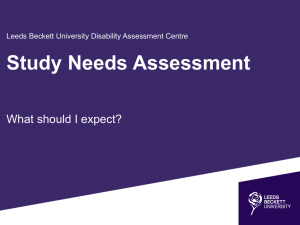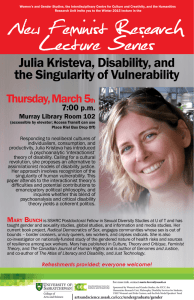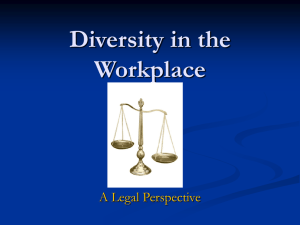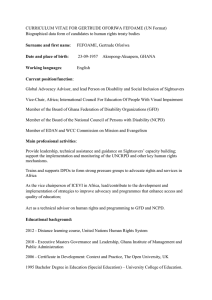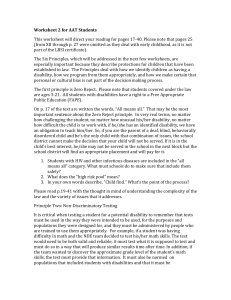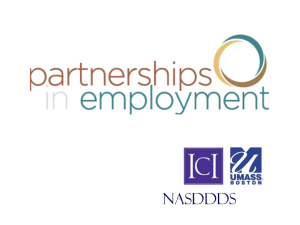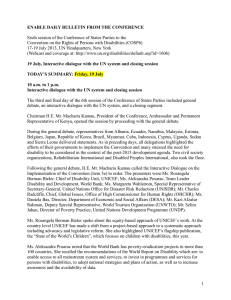Monitoring * international perspective
advertisement
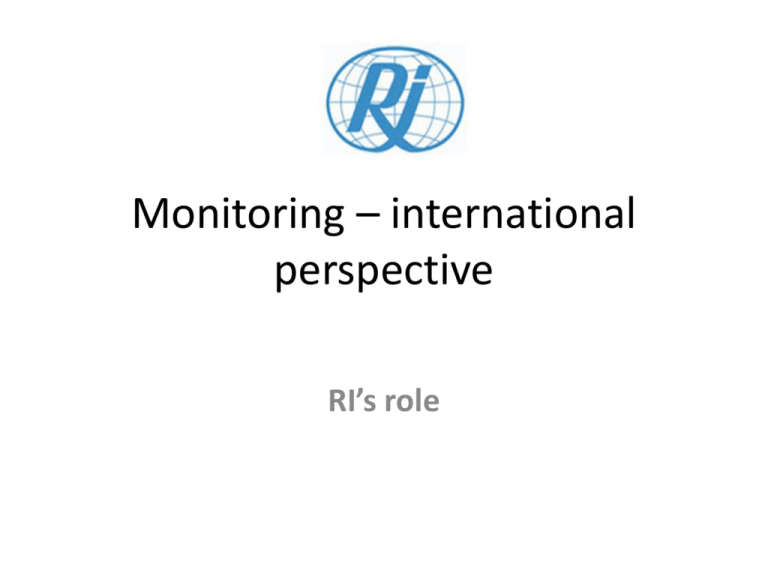
Monitoring – international perspective RI’s role “Nothing About Us Without Us" A landmark book by James I. Charlton • The culture always existed, but the acknowledgement of it did not. • A crucial call for action which ensured disabled people were around the table • Implementation promise 3 areas of responsibility • Bengt Lindqvist (1st Special Rappateour) – Mainstream the responsibility with an enforcement mechanism – The government of the country always has the final responsibility – Disability community, headed by DPOs, must assume responsibility for advocating change and progress Global Advocacy Campaign THE LESSONS LEARNT Implementing the changes Advocacy Capacity building Share expertise In implementing the UN CRPD for states and with civil society in countries where there is willingness to realize partnerships with international and regional organizations Relative to Art. 32 of the UN CRPD. Beyond Lobbying Laura Hershey has written: "No community can survive and thrive for very long solely on the strength of lobbying, legislation, litigation, and protest. ..more is needed to feed a people's quest for identity and autonomy, and to change a minority group's relationship to the larger society”. • Adding to the tool kit • Workable solutions Toolkit • Consistency • Consensus • Collaboration • Communication • Context • Comprehensiveness • Confrontation/ negotiation • Change • Courage Outcome • • • • Paradigm shift from welfare to rights Getting people into work Get children into schools Access to health; rehabilitation; assistive technology and interpreters • Have choices where and with whom I live • Access to justice Strategies • Informed disability community – accessible formats – Discussion on what is in the UNCRPD – Rural areas – Indigenous people and minority groups • Organised civil society – Working collectively – Building relationships – Building connections Strategies • Build alliances and partnerships – Who is best to have the dialogue and with whom • Clear goals and plan of action with clear objectives – – – – – – – Means and outcomes Consistent with Principles Data, statistics and research Best practice solutions Consider the integrated nature of the elements Short, medium and long term goals Sell inclusiveness Strategies • Capacity building of: – Civil society – Legislatures – Executive – Teachers – Employers As Partners and not targets • Evaluate the success Strategies • Effective monitoring mechanisms with good baseline data • Understand governmental budgetary processes and the machinery of government • Answer “this is not possible” question • Disability part of all national plans • Training of professionals and stakeholders reflect the social model Strategies • Tackle the hard questions – Supported decision making • Take some risks • Strategies, tools and capacity to effectively use the media The journey We have an increasing knowledge of where we have been and where we are going. (Thomas C. Nelson “Disability Culture”) It takes a whole culture of people • producing idealizations of what everyone should be • system of measures ("Culture as Disability" by McDermott and Varenne) Teamwork “Now we have all embarked on one canoe, let us be careful we do not pull backwards. Let us pull in the same direction, as those sit in the bows; do not let those in the stern paddle in the opposite direction “ Wiremu Pohe 1860
